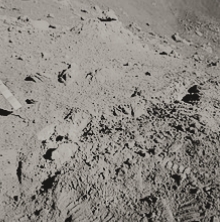In this article we will discuss about regolith. The term regolith related to the planetary bodies such as moon and earth.
What is Regolith?
The very changeable, mostly unconsolidated but occasionally recemented, granular layer that lies on top of bedrock on planetary bodies is known as regolith.

In order to distinguish it from terrestrial soils, which are mechanically similar but include organic elements, this layer of debris is sometimes known as a soil-like deposit.
Detailed Description
Regolith can be a few millimeters thin or hundreds of meters thick. It might be as young as a moment or as old as hundreds of millions of years.
On Earth, weathering and biological processes produce regolith. The top layer of regolith, which often contains a lot of organic materials, is sometimes referred to as soil.
One of the most crucial elements for the majority of organisms is the existence of regolith. Animals cannot dig tunnels or create shelter because few plants can grow on or in hard rock, and because there is no loose material. Engineers working on buildings, roads, and other civil engineering projects need regolith as well. If the design is to resist tough use, it is necessary to document the vast range of mechanical properties of regolith.
For geochemical and geophysical exploration of underlying mineral resources, it is crucial to comprehend the features of regolith, particularly its geochemical makeup. Sand, gravel, crushed stone, lime, and gypsum are all common building materials that can be found in regolith. Aquifers are filled and drained in the regolith zone. Many aquifers, including alluvial aquifers, are completely encased in regolith. Due to the presence of salts and acid generators, the composition of regolith can also have a substantial impact on the composition of water.
